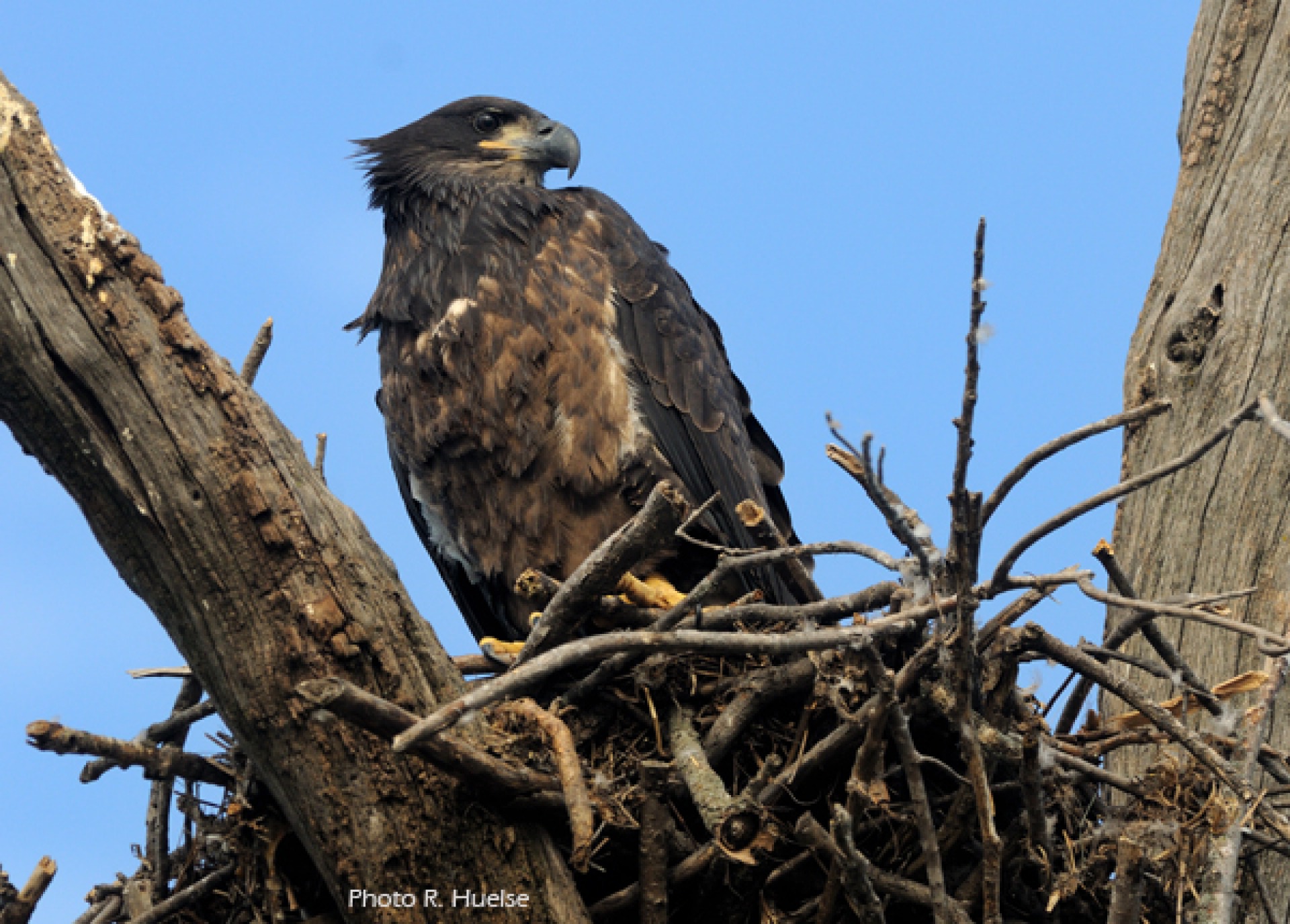Bald eagles are a most striking and stately bird. The bright white head and tail can show up along tree lines, roosts, and glisten amidst a dense fog. In the winter, Lake Red Rock holds hundreds of eagles within the Des Moines River below the dam and throughout our river communities. Thousands of people will come to the area to see and photograph our National Symbol. Most are casual observers struck by the grace and beauty of roosting eagles and taking flight over the open water to catch a fish.
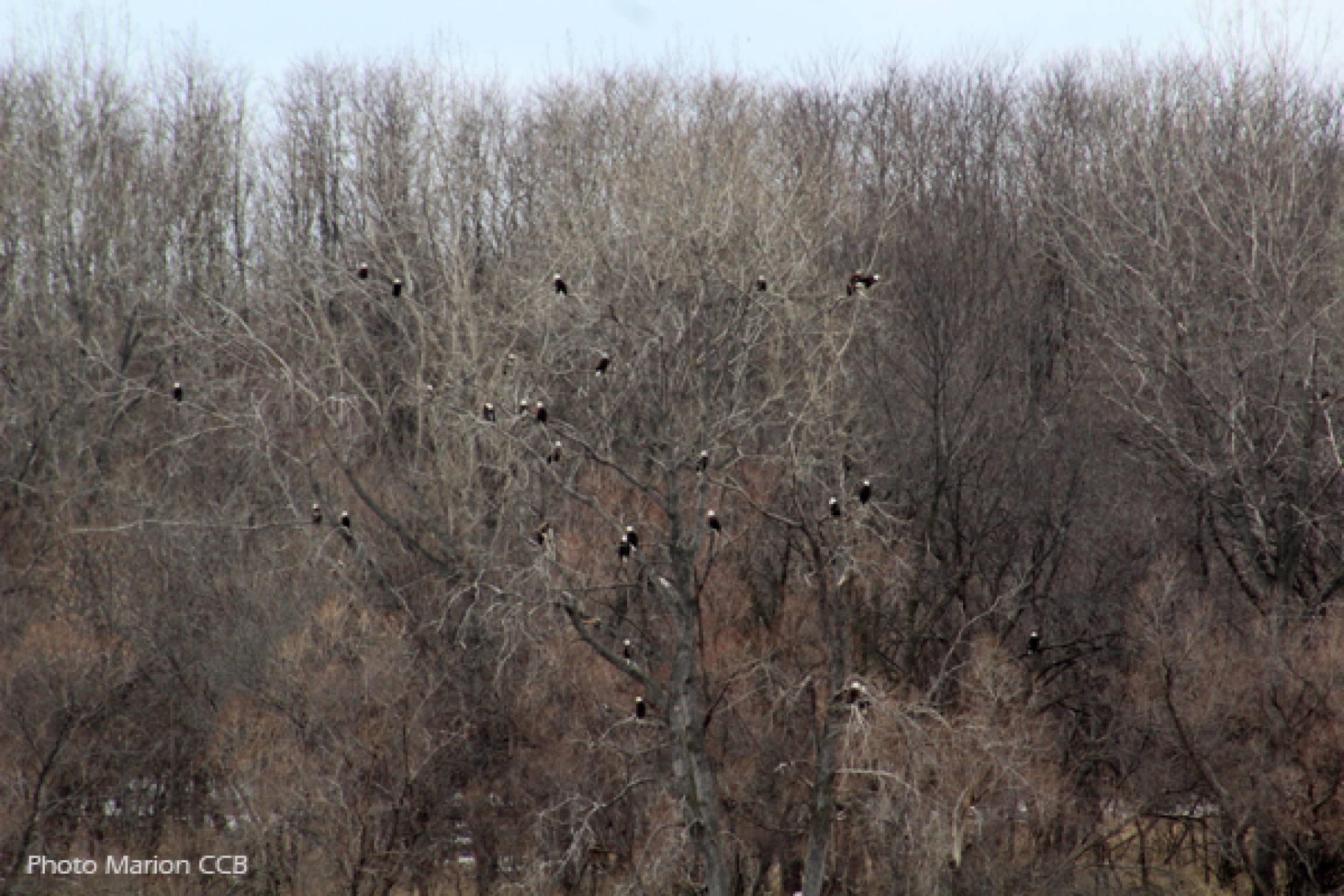
But, what about those big brownish-colored birds? Some are dark, some are speckled, and some just look bigger than an eagle. These birds are considered ‘immature’ or ‘juvenile’ eagles until they have reached their adult coloration or plumage. The layers of feathers that cover a bird, the pattern, color, and arrangement of those feathers are the bird’s ‘plumage.’
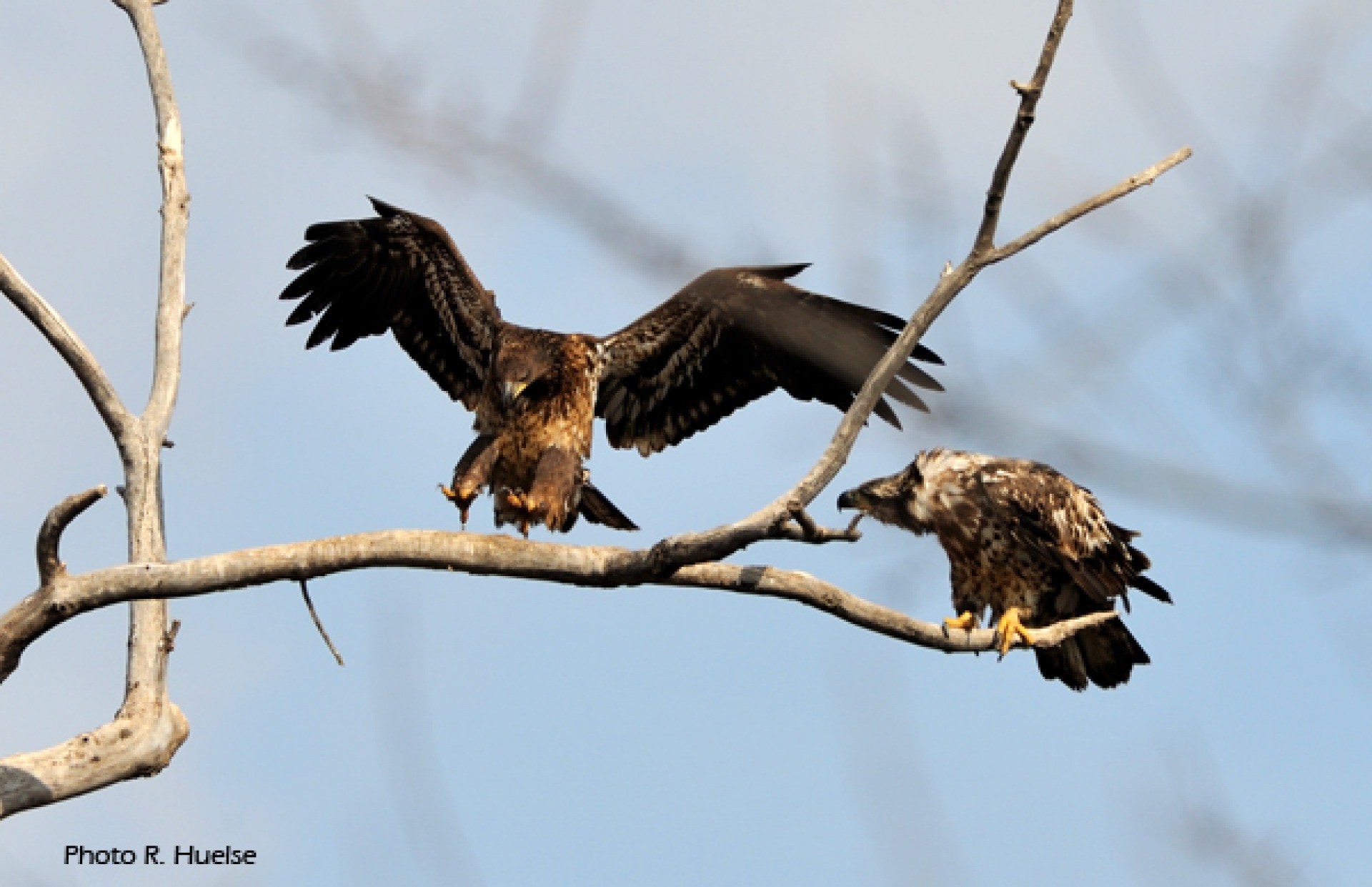
The plumages are acquired by feather ‘molts’ that begin each spring and are completed by late fall and will carry the bird through the winter months. Feathers are similar to our own hair and nail structure and are made of a protein, keratin. If they become damaged or worn, they need to be replaced. Hormones and seasonal changes trigger feather molts. Also, if a bird loses a complete feather, it will immediately be replaced without waiting for their molting period. Feathers need to be in the best shape possible for them to be in top flying condition. Annual molts must occur over a long period of time and in a pattern so that they can continue to fly and hunt for food. Unlike waterfowl that will molt their feathers all at once and are left flightless for a long period of time. Understanding basic molt patterns assist in the identification of a species, as well as determining an age.
Can you tell an eagle’s age from their color?
The aging of bald eagles is not a clear-cut science. Even after all the years of study, there is no finite way to get an exact age just by looking at plumage color. Health, diet, and injury can play a strategic part in feathers, as well. Some eagles that receive injury may become a year behind in their plumage changes, may speed up color change and can look different than their same-age siblings. Once they reach maturity and become an adult, it is almost impossible to attribute an 'age' to a wild bald eagle.
As young, immature eagles age, their eyes (iris) will begin to lighten, going from a dark brown to yellow and their beak changes from a charcoal black to a brilliant yellow. These changes occur over years of time, sometimes we overlook the younger generations until they become mature with their stately appearance.
So, just how can you possibly get an idea of how old those eagles might be?
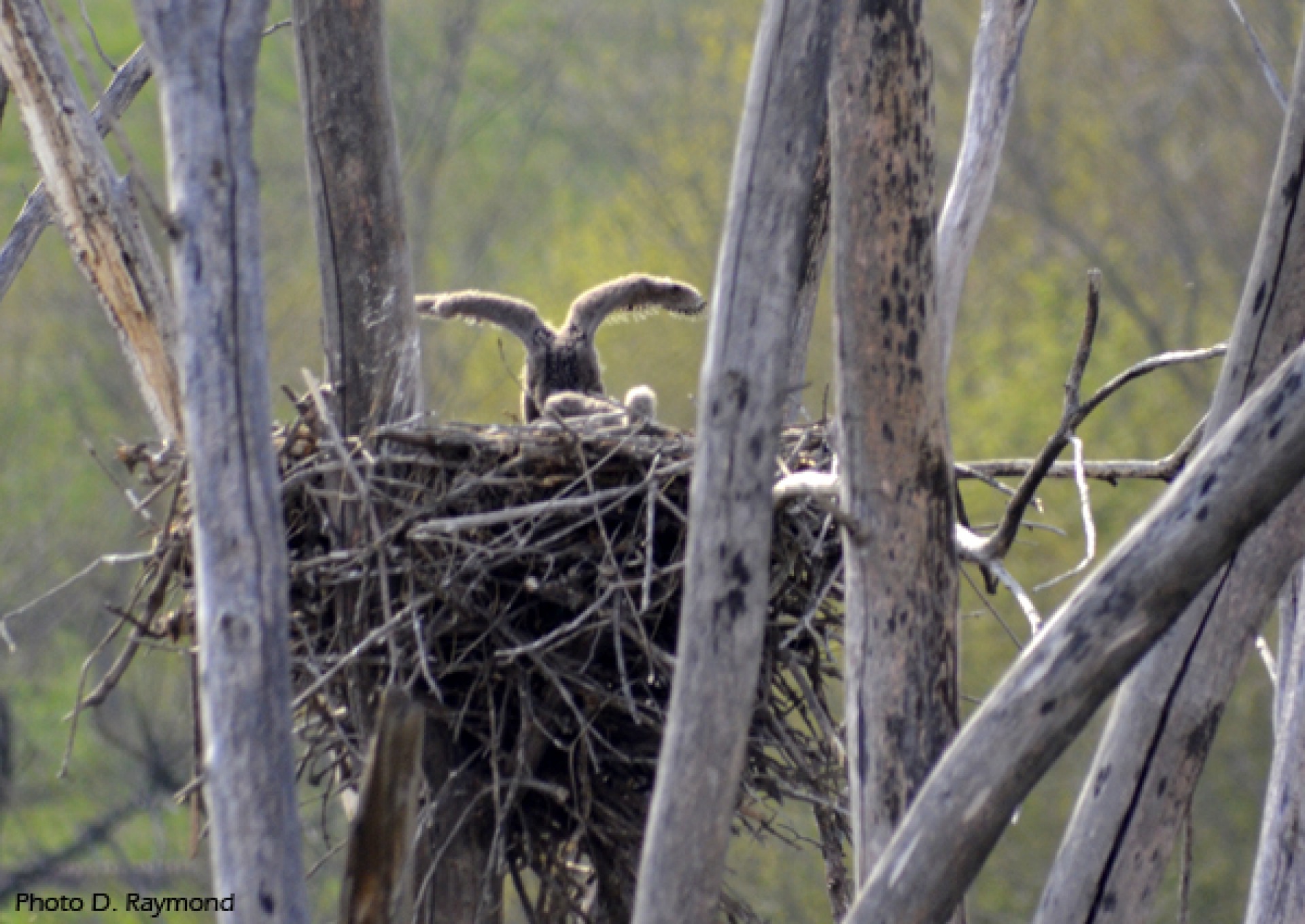
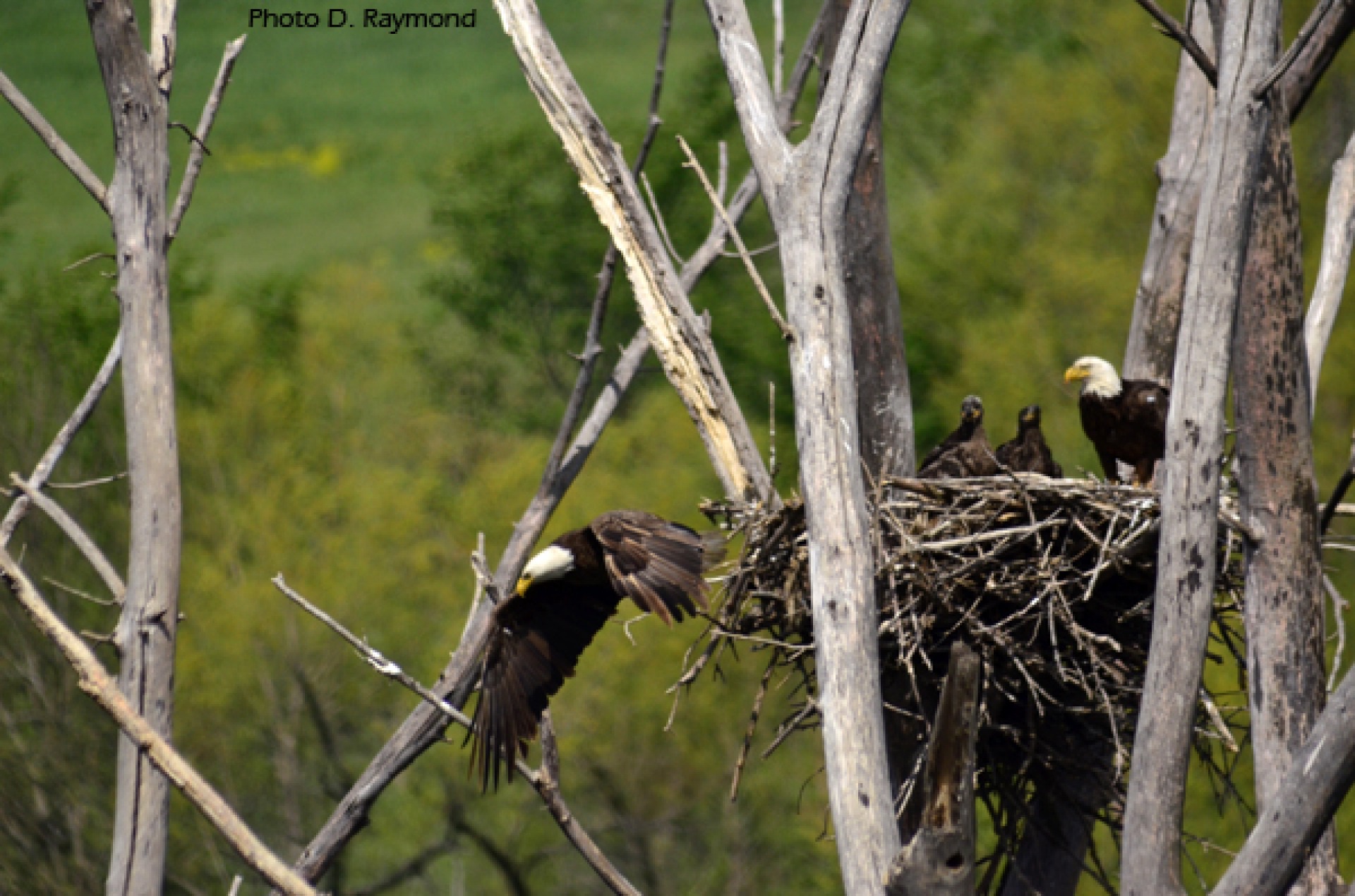

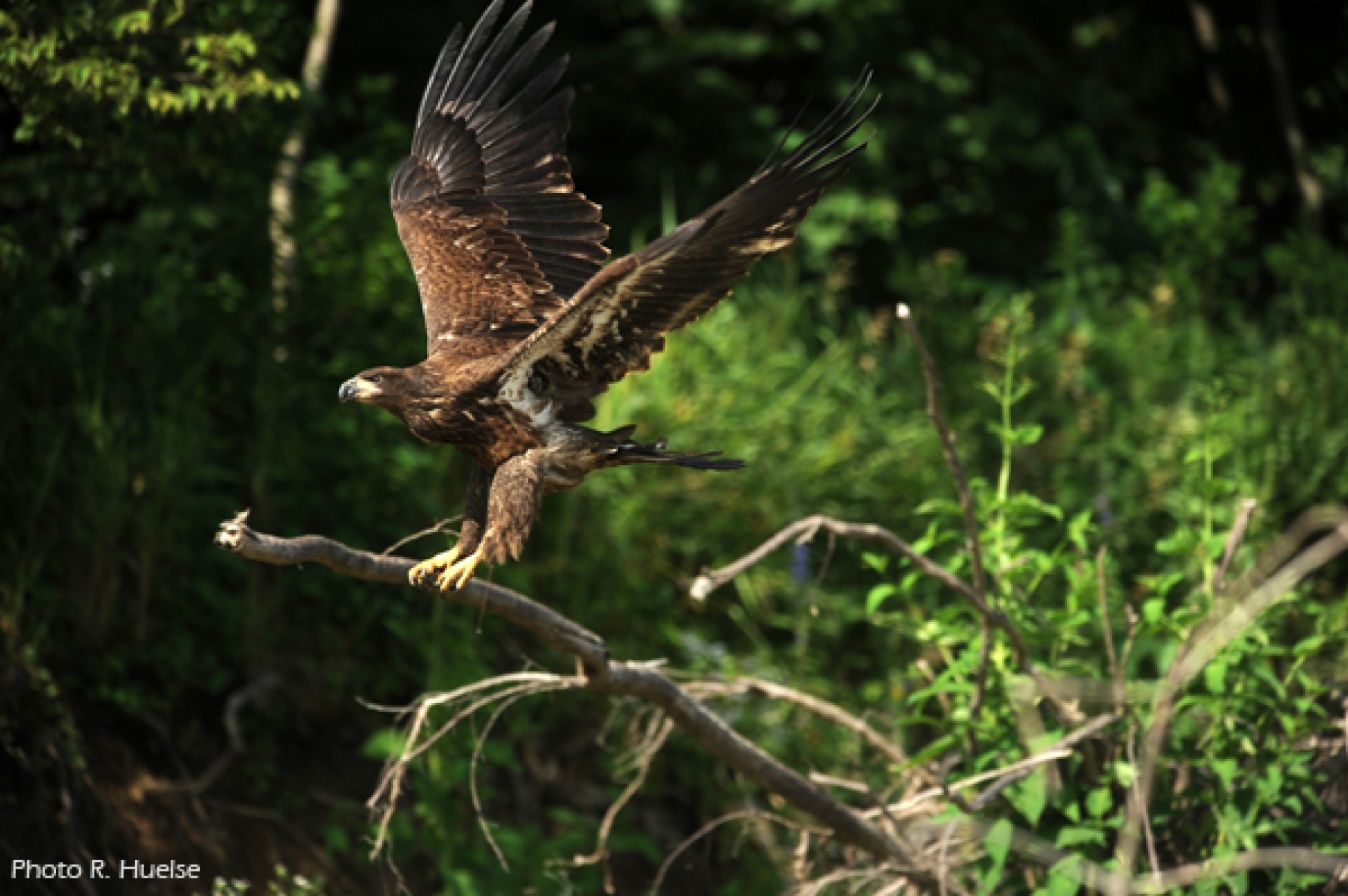
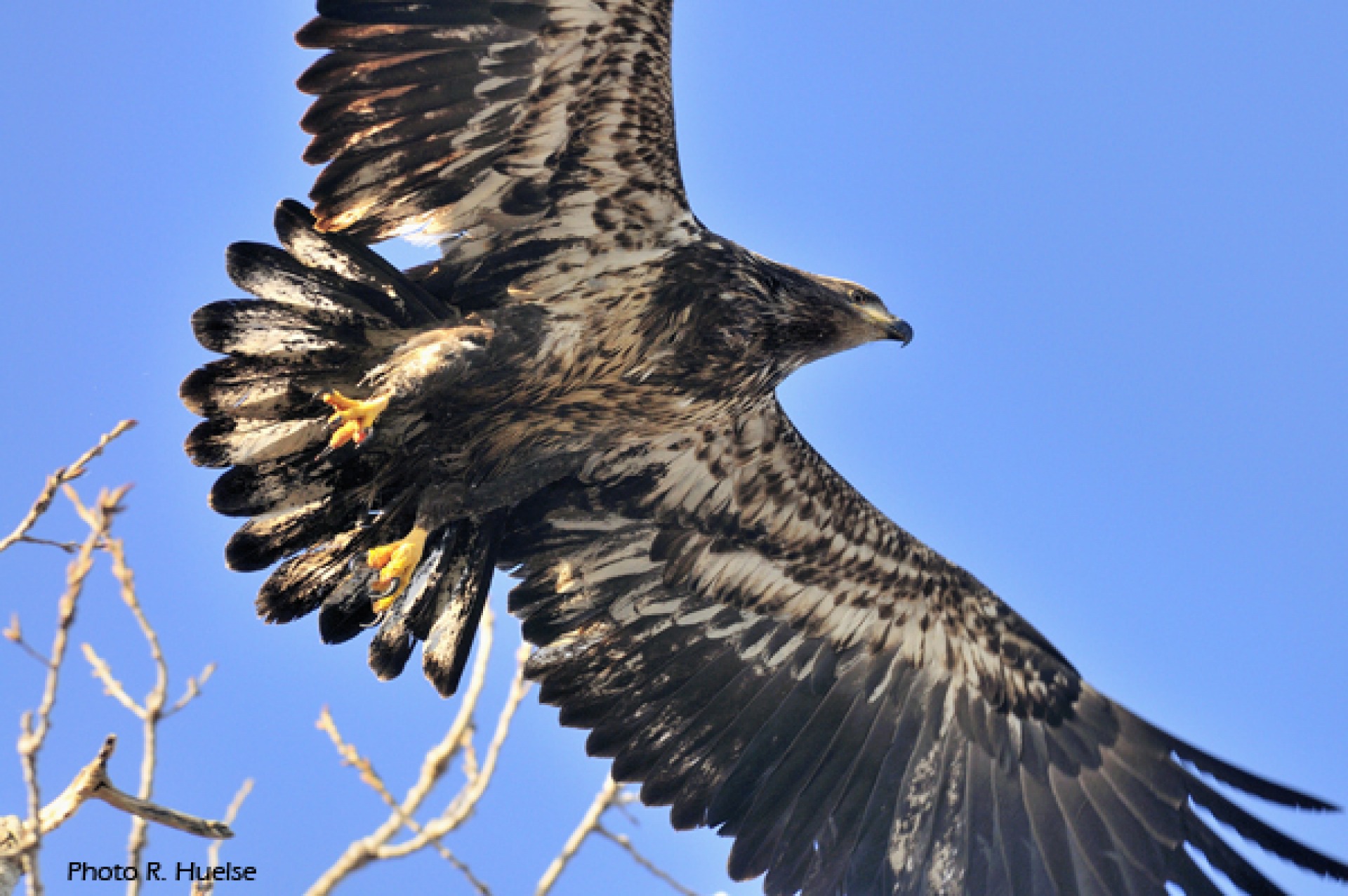
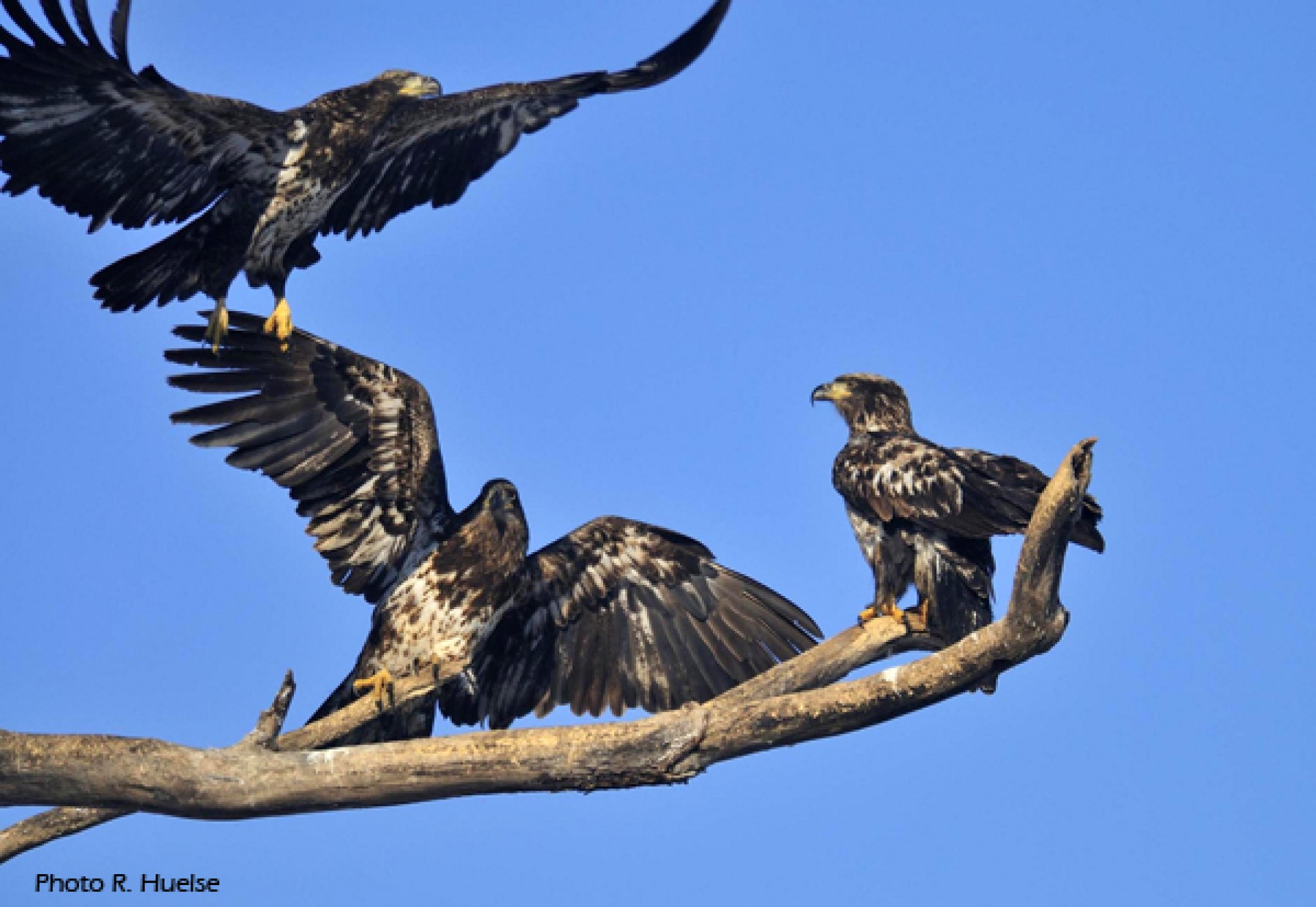
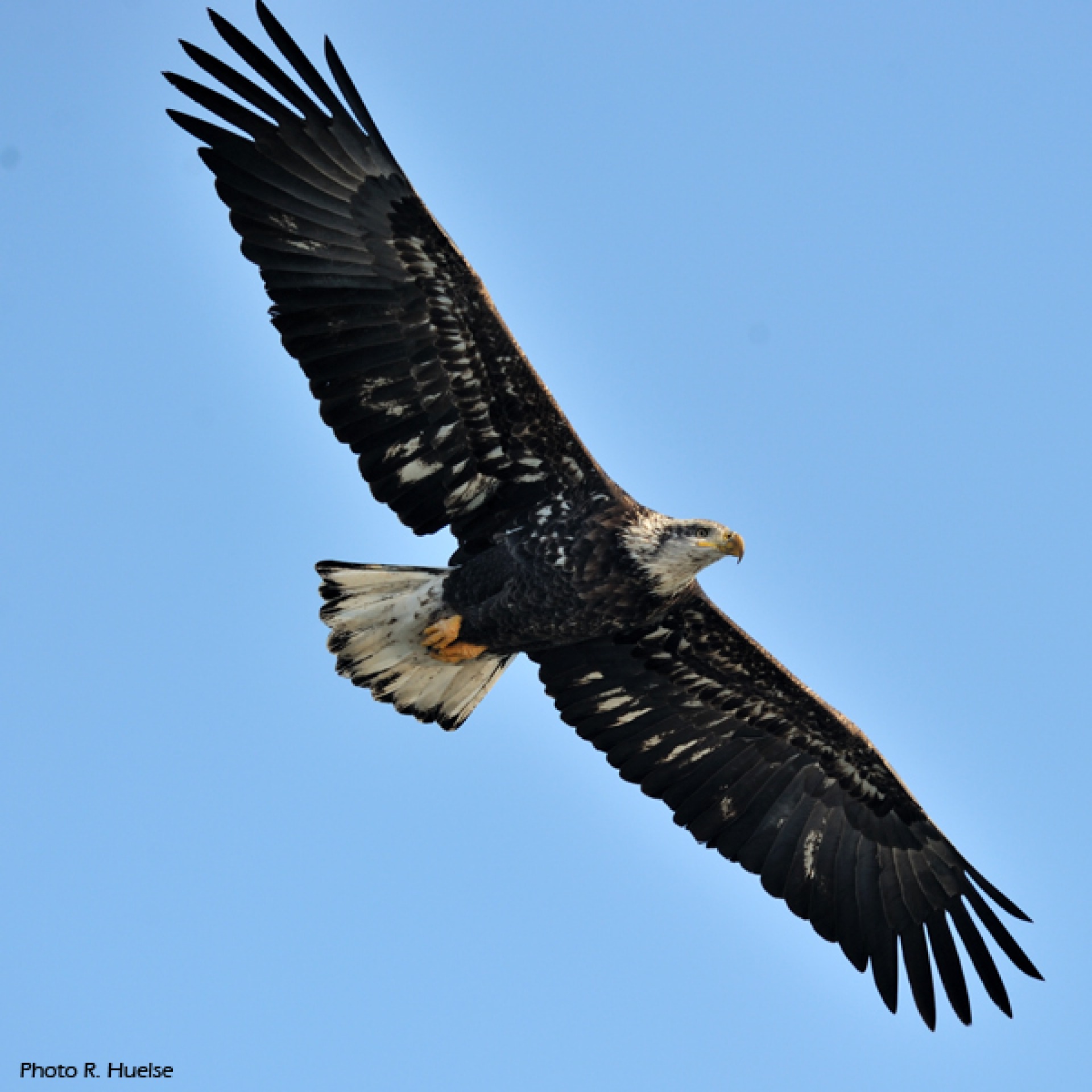
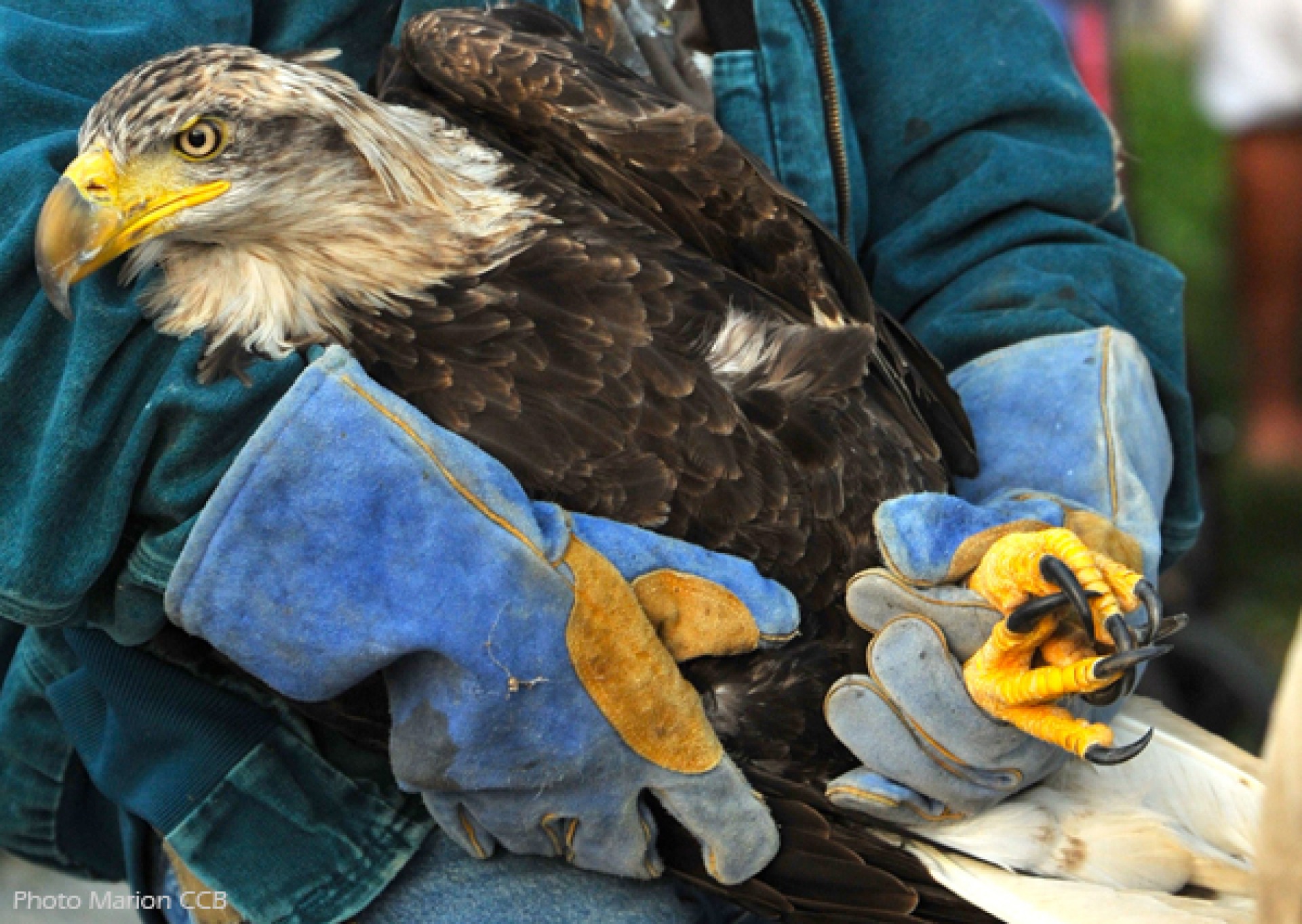
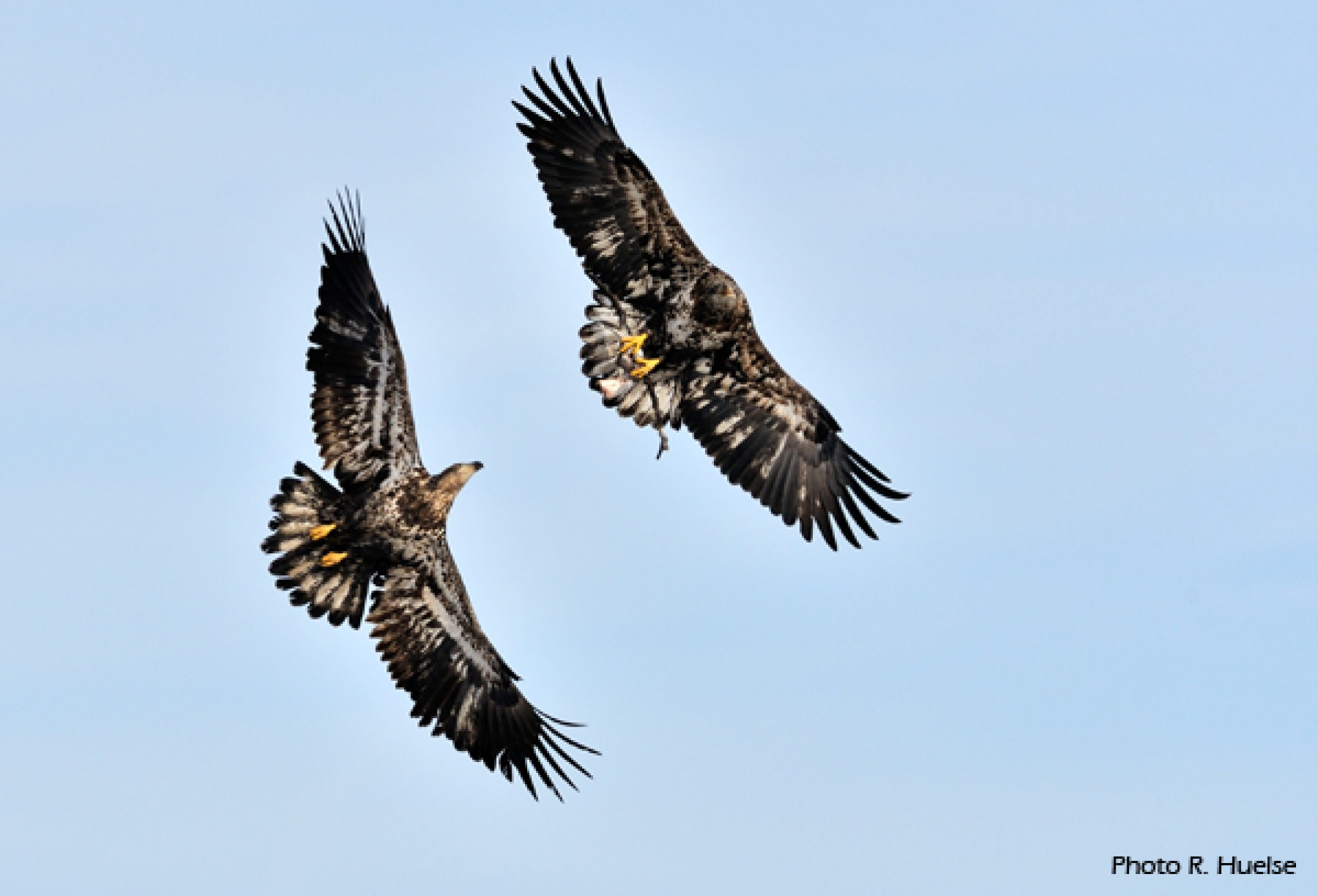
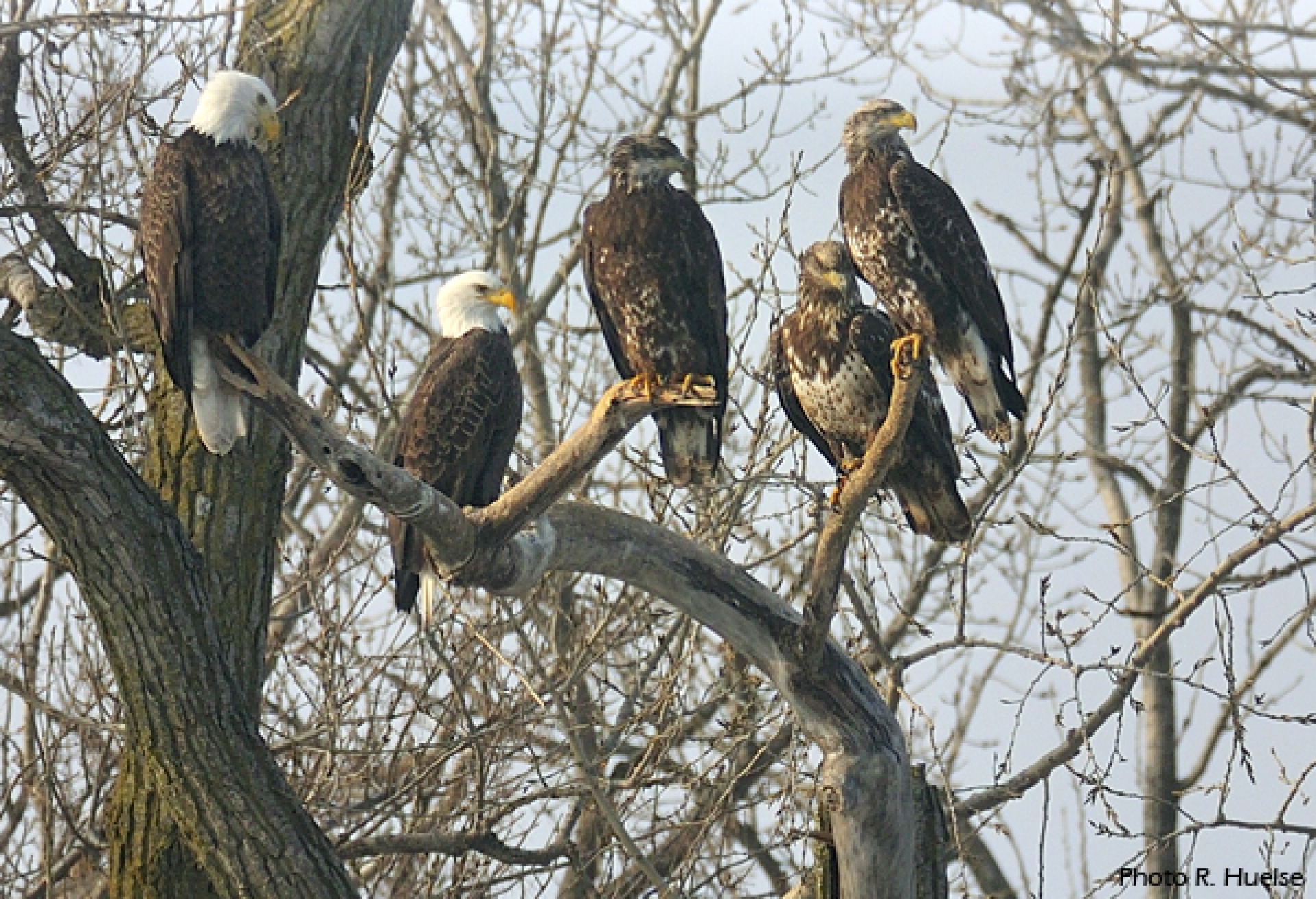
Why does age matter?
Who really needs to know or wants to know the age or progression of changes in our eagle population? This is certainly interesting information for the casual observer. But knowing bald eagle ages is very important with population counts, biologist’s surveys, reported injuries to rehabilitation centers, and all types of research.
Midwest eagle research
- SOAR Eagles and Lead
- Eagle Valley Nature Preserve (SW Wisconsin) - The Eagle Valley staff has been actively researching raptor ecology since 1989. Projects include raptor migration counts, studies of Bald Eagle winter night-roost dynamics, and eagle satellite tracking.
- Satellite Tracking of Bald Eagles in the Upper Midwest - read abstract here
- Persistence Pays Off – a post by Brett Mandernack about the fitting of one hatch-year eagle’s transmitter
Seeing all ages of eagles in our river communities lets us know that these awe-inspiring birds have made a comeback in our lifetime.
published Tuesday, June 1, 2021

